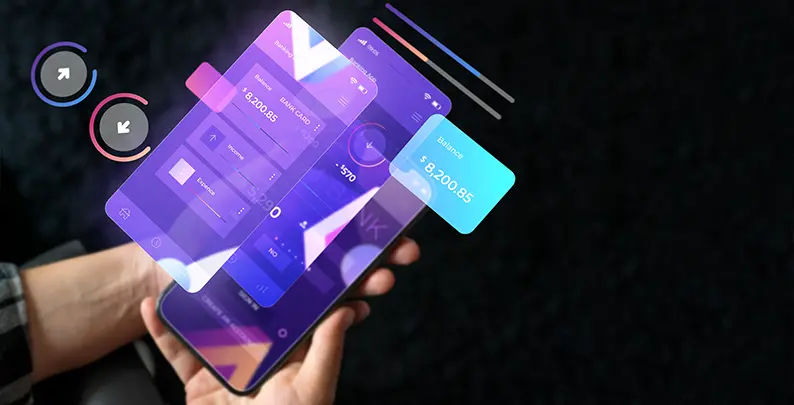Table of Contents
Mobile game development presents unique hurdles that can make or break a project’s success. From technical constraints to platform fragmentation, monetization strategies, and user retention, today’s mobile game developers face an increasingly complex landscape. This comprehensive guide explores the most pressing challenges in mobile game development and provides actionable solutions to help developers navigate these obstacles and create successful, engaging mobile gaming experiences.
The mobile gaming industry represents one of the most lucrative and rapidly growing sectors in entertainment, with billions of players worldwide and revenues exceeding traditional gaming platforms. However, every mobile game developer must understand a critical reality beneath this success; when overlooked or inadequately addressed, the challenges inherent in mobile game development can transform promising projects into costly disappointments.
The consequences of underestimating challenges in mobile game development are stark: failure rates remain alarmingly high, with recent industry data indicating that 97% of mobile games released between 2022 and 2025 did not achieve commercial success. The distinction between thriving game developers and those who struggle isn’t necessarily talent or resources; it’s the proactive recognition and systematic addressing of the unique challenges that define mobile game development. From technical constraints and platform fragmentation to user acquisition and monetization complexities, successful developers understand that preparation and strategic problem-solving are essential.
What separates the successful 3% from the rest isn’t avoiding challenges; it’s mastering them before they become project-ending obstacles.
The Challenge: Scope creep emerges as the most persistent threat to mobile game projects, with poor scope management being identified as the most significant reason game projects fail. Mobile game developers frequently encounter unclear project boundaries, leading to feature expansion beyond the original vision, unrealistic timeline expectations that don’t account for mobile-specific complexities, and inadequate project planning resulting in continuous crunch periods. The lack of defined parameters often causes project derailment, while poor communication between team members about project goals leads to feature creep driven by self-doubt about initial game concepts.
Solutions:
Effective scope management enables mobile game developers to deliver projects on time and within budget while maintaining quality standards.
The Challenge: Mobile devices present severe hardware limitations, creating unique technical constraints for mobile game developers. The primary technical challenges include limited processing power compared to PCs and consoles, memory constraints with finite RAM causing performance bottlenecks, battery life considerations requiring optimization for power consumption, and heat generation from intensive graphics processing. Additionally, storage limitations affect asset quality and game size, while GPU budget constraints demand careful optimization as form factors require more power for higher resolution displays.

Solutions:
Overcoming technical performance challenges requires mobile game developers to prioritize optimization from the earliest development stages rather than treating it as an afterthought.
The Challenge: Device fragmentation affects over 60% of game developers, making it one of the most significant technical hurdles in mobile game development. The fragmentation challenges include thousands of Android devices, each with unique screen sizes and hardware specifications, multiple OS versions requiring compatibility across different system capabilities, and varying performance levels from low-end smartphones to high-end tablets. Mobile game developers must also navigate different input methods, touch sensitivity across devices, screen resolution diversity, create UI scaling challenges, and hardware capability variations affecting graphics rendering and processing.
Solutions:
Addressing device fragmentation requires game developers to adopt a flexible development approach that prioritizes compatibility without compromising the core gaming experience.
The Challenge: Mobile UX design faces unique constraints that don’t exist in other gaming platforms, presenting specific challenges for mobile game developers. The primary UX challenges include small screen real estate limiting interface elements and information display, touch-only input limitations restricting complex control schemes, and varied screen orientations requiring flexible interface design. Additionally, game developers must consider attention span limitations as mobile gaming often occurs in short sessions, accessibility requirements across diverse user abilities and preferences, and platform-specific design guidelines that must be followed for app store approval.

Solutions:
Mastering mobile UI/UX design enables game developers to create engaging experiences seamlessly across the diverse mobile gaming ecosystem while maintaining high user satisfaction and retention rates.
The Challenge: Player retention represents one of the most critical challenges facing mobile game developers, with 52% of mobile games being uninstalled within 30 days and day-30 retention averaging only 2.4%. Game developers must contend with fierce competition as dozens of new games are released daily, extremely short attention spans in mobile gaming environments, and a lack of meaningful progression systems that keep players engaged long-term. Additionally, poor onboarding experiences that fail to hook players initially and insufficient social features to create community engagement compound the retention problem, making it increasingly difficult for game developers to build sustainable player bases.
Solutions:
Successful player retention requires mobile game developers to view engagement as an ongoing relationship rather than a one-time acquisition, focusing on long-term value creation for players.
The Challenge: Quality assurance becomes exponentially more complex in mobile environments due to device diversity and platform-specific requirements that game developers must navigate. The primary QA challenges include device-specific bugs appearing only on specific hardware configurations, performance variations across different device capabilities, and platform-specific testing requirements for iOS and Android. Mobile game developers face limited testing resources for comprehensive device coverage, time constraints pressuring release schedules despite incomplete testing, and complex integration testing requirements with multiple systems and APIs.
Solutions:
Effective quality assurance enables game developers to deliver polished experiences that maintain player trust and positive app store ratings across diverse device ecosystems.
The Challenge: User acquisition costs have reached unprecedented levels, making marketing ROI increasingly difficult to achieve for mobile game developers. The monetization challenges include rising player acquisition costs on platforms like Google and Meta, market oversaturation with fierce competition for player attention, and player fatigue with traditional monetization models like free-to-play and in-app purchases. Game developers must also navigate changing player expectations requiring more sophisticated monetization approaches, platform commission fees reducing net revenue from sales, and the delicate balance between monetization and player satisfaction to avoid negative reviews.

Solutions:
Mastering monetization requires mobile game developers to prioritize player value while creating sustainable revenue streams that support long-term game development and updates.
The Challenge: Rapid technological evolution requires game developers to adapt to remain competitive in an ever-changing marketplace. The primary trend challenges include fast-paced technology changes with new devices and OS updates continually being released, emerging technology integration requirements for AR, VR, and AI capabilities, and changing player expectations driven by technological advances. Mobile game developers also face significant investment requirements for staying current with the latest development tools, skill gap challenges as teams need continuous learning and training, and market trend volatility, making long-term planning increasingly difficult.
Solutions:
Successful trend adaptation allows mobile game programmers to stay ahead of the competition while meeting evolving player expectations and technological capabilities.
The Challenge: Creating high-quality visuals while maintaining optimal mobile performance creates a fundamental tension that mobile game developers must constantly navigate. The art challenges include performance versus quality tradeoffs requiring constant optimization decisions, limited art budgets for independent developers, and consistency maintenance across different team members and art assets. Mobile game programmers also struggle with technical constraints that limit artistic vision implementation, asset optimization requirements for various device capabilities, and platform-specific art requirements for different app stores that can impact visual consistency.
Solutions:
Overcoming game art and design challenges enables developers to create visually stunning experiences that perform consistently across diverse mobile hardware configurations. Reaching out to game design companies for outsourced resources can be helpful.
The Challenge: Team communication failures represent a primary cause of project collapse, especially challenging for mobile game developers working with distributed teams across different time zones. The collaboration challenges include a lack of clear leadership and defined authority structures, poor communication protocols leading to misunderstandings and conflicts, and remote work coordination difficulties. Mobile game programmers struggle with version control conflicts in collaborative development environments, inadequate documentation causing knowledge gaps and inconsistencies, and personality conflicts and ego clashes that can disrupt team dynamics and project progress.
Solutions:
Effective team collaboration empowers mobile game developers to leverage collective expertise while maintaining project momentum and delivering high-quality results on schedule.
Our game development studio brings over a decade of expertise in mobile game development, having successfully delivered 200+ games across diverse genres and platforms. As a leading mobile game development company, we understand the intricate challenges that mobile game programmers face and provide comprehensive solutions ranging from concept to launch and beyond. Our experienced team of game developers, artists, and technical specialists works collaboratively to transform your vision into engaging, commercially successful mobile games while navigating the complex landscape of technical constraints, market demands, and player expectations that define today’s mobile gaming industry.
The mobile gaming industry presents unprecedented opportunities alongside equally significant challenges that can determine the success or failure of any project. For game developers, understanding and proactively addressing these twelve critical challenges, from budget constraints and technical performance to player retention and regulatory compliance, is essential for creating commercially viable games in today’s competitive marketplace. By implementing the solutions outlined in this guide, mobile game developers can significantly improve their chances of joining the successful 3% who achieve both critical acclaim and commercial success in the dynamic world of mobile gaming.
Mobile game development typically takes 3-18 months, depending on game complexity, team size, platform requirements, features, and testing phases required for quality assurance and optimization.
Mobile game developers need programming languages (Java, Swift, C#), game engines (Unity, Unreal), UI/UX design, problem-solving abilities, mathematics, and an understanding of mobile platform requirements.
Mobile game developers primarily use C# with Unity, Java/Kotlin for Android, Swift/Objective-C for iOS, C++ for performance-critical games, and JavaScript for web-based mobile games.
Mobile game programmers improve retention through engaging onboarding, regular content updates, social features, personalized experiences, reward systems, push notifications, and community-building initiatives that maintain long-term engagement.
Game developers use Unity, Unreal Engine, Android Studio, Xcode, version control systems, project management tools, analytics platforms, and testing frameworks for comprehensive development workflows.